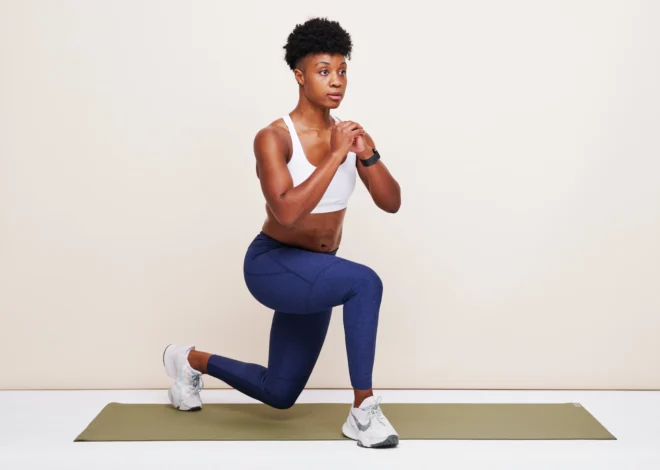
Top 10 Expert Tips to Supercharge Your Exercise Routine
1. Understanding Upper Body Fat: Why Targeted Exercise Matters
Upper body fat primarily accumulates in areas such as the arms, shoulders, back, and chest. It can result from various factors, including genetics, hormone levels, diet, lifestyle, and overall body composition. Typically, upper body fat comprises subcutaneous fat (just under the skin) and, in some cases, visceral fat, which is more dangerous as it surrounds internal organs.
Excess upper body fat may contribute to an imbalanced body shape, affect posture, and increase the risk of health issues like cardiovascular disease.
Reducing upper body fat can improve physical appearance, increase muscle definition, and enhance overall body strength. Moreover, shedding excess fat in the upper body can boost metabolic rates, as muscle tissue burns more calories than fat.
Strengthening and toning the upper body improves functional strength, making everyday activities easier. Additionally, reducing upper body fat is linked to lower levels of stress and better hormone balance, which can positively impact mental health and self-esteem.
2. The Role of Diet in Reducing Upper Body Fat
Diet is crucial to reducing upper body fat, as even the most effective workouts may yield results with proper nutrition. Foods that aid fat loss include:
– Lean Proteins like chicken, fish, tofu, and legumes, which help build and repair muscles.
– Healthy Fats from sources like avocados, nuts, seeds, and olive oil support satiety and hormone balance.
– Fibre-rich foods like vegetables, whole grains, and fruits slow digestion, control blood sugar and prevent overeating.
– Hydrating Foods such as cucumbers, leafy greens, and berries provide water and essential nutrients to support metabolic processes.
Avoiding Common Diet Mistakes That Increase Upper Body Fat
Certain dietary habits can hinder upper body fat reduction. Common mistakes include:
– Excess Sugar Consumption: Sugar can spike insulin levels, promoting fat storage, particularly in the upper body.
Skipping Meals: Skipping meals can lead to overeating later, disrupting metabolism and increasing fat storage.
– Not Eating Enough Protein: Protein is essential for muscle preservation and can help reduce cravings so that a low-protein diet may lead to muscle loss and slower fat reduction.
High-Calorie Processed Foods: Foods like chips, sugary drinks, and fast food provide empty calories, leading to fat accumulation and bloating, especially around the upper body.
– Inadequate Hydration: Dehydration can slow metabolism and hinder the body’s ability to burn fat effectively.
3. Building an Effective Exercise Routine for Upper Body Fat Reduction
Setting Realistic Goals for Upper Body Fat Loss
Setting realistic and measurable goals is essential for success. Understand that fat loss takes time, and aim for gradual changes to maintain muscle while reducing fat rather than aiming for rapid fat loss, which can lead to muscle loss, set goals like reducing inches or achieving specific fitness milestones.
A good starting point is aiming for 0.5-1 pound of fat loss per week, which is sustainable and achievable with a consistent workout and diet routine.
Creating a Balanced Workout Schedule
A balanced workout schedule includes strength training, cardio, and rest days for optimal upper body fat reduction. Here’s a sample framework:
– Strength Training (2-3 times per week): Focus on exercises targeting the arms, shoulders, chest, and back. Include compound movements like push-ups, pull-ups, and shoulder presses, which engage multiple muscle groups and promote fat burning.
Cardio (3-4 times per week): For maximum fat loss, Include both steady-state cardio (e.g., jogging, cycling) and high-intensity interval training (HIIT). Cardio helps burn calories and fat while also improving cardiovascular health.
Rest and Recovery Days (1-2 times per week): Muscle recovery is essential for growth and endurance. To aid recovery and flexibility, include stretching, yoga, or light activities on rest days.
– Progress Monitoring: Track your progress with photos, measurements, or a fitness journal to stay motivated and adjust your workout routine as needed.
A well-rounded approach can accelerate upper body fat reduction by aligning exercise with dietary adjustments, leading to a healthier and stronger upper body.

4. High-Intensity Interval Training (HIIT) for Fast Upper Body Fat Burn
Why HIIT is Effective for Upper Body Fat Loss
HIIT is a training method alternating between short, intense bursts of exercise and brief rest periods. It’s highly effective for fat loss because it increases calorie burn during and after the workout, a phenomenon known as excess post-exercise oxygen consumption (EPOC).
This “afterburn” effect can boost metabolism for hours after completing a HIIT session. HIIT also engages multiple muscle groups, including the upper body, and improves cardiovascular fitness, helping to reduce overall body fat and specifically targeting upper body fat through consistent calorie expenditure.
Sample HIIT Exercises to Include in Your Routine
Burpees with Push-Ups is a Full-body exercise that targets the chest, shoulders, and arms while raising the heart rate.
– Mountain Climbers: Works the shoulders, triceps, and core, burning calories while toning upper body muscles.
Battle Ropes are a power move that focuses on the arms, shoulders, and back, effectively building strength and burning fat.
Jumping Jacks with Arm Raises: This exercise incorporates shoulder movement for upper body toning and is ideal for a fast-paced fat-burning circuit.
– High Knees with Punches: Adds an upper body component to standard high knees, engaging arms and shoulders while raising the heart rate.
For best results, perform each exercise for 30-45 seconds with 15-20 seconds of rest, completing 3-4 rounds.
5. Strength Training for Upper Body Fat Reduction and Muscle Toning
Targeted Exercises for the Arms, Shoulders, and Chest
Strength training is crucial for upper body toning and fat reduction, as it builds muscle, which increases resting metabolism. To target key areas:
– Push-Ups: Target the chest, triceps, and shoulders, essential for upper body definition.
– Shoulder Presses: Work the deltoids and upper arms, improving strength and posture.
– Tricep Dips: Focus on the triceps, toning the back of the arms.
– Bent-Over Rows: Engage the upper back and biceps, improving back strength and reducing fat around the arms.
– Chest Flys: Target the chest muscles, helping define and tone the area.
Perform each exercise with proper form, aiming for 3-4 sets of 10-12 reps. Gradually increasing weights can enhance muscle growth and fat-burning effects.
How Strength Training Boosts Metabolism
Strength training boosts metabolism by building lean muscle mass. Unlike fat, muscle tissue burns more calories at rest, meaning the more muscle you make, the more calories you burn throughout the day.
This increase in metabolism helps the body burn fat more effectively, particularly in the upper body, where muscle groups are larger and can generate a more significant metabolic impact when activated.
6. The Power of Cardio for Upper Body Fat Loss
Best Cardio Workouts to Burn Upper Body Fat
Cardio workouts help burn calories, which is essential for overall fat reduction. While cardio alone doesn’t directly target specific areas, consistent cardio combined with a calorie deficit can help reduce upper body fat. Effective cardio exercises include:
Rowing Machine: This machine works the shoulders, arms, and back, providing both cardiovascular and upper-body engagement.
Swimming offers a full-body workout with a strong focus on the upper body, especially the shoulders and chest.
Boxing or Kickboxing: It involves arm and shoulder movements, burning calories while strengthening and toning the upper body.
Elliptical with Arm Handles: This exercise provides a low-impact workout that targets both the lower and upper body.
Jump Rope: It boosts cardiovascular health and involves shoulder and arm movements, contributing to fat burn and toning.
Incorporating Cardio for Overall Fat Reduction
For optimal results, incorporate cardio 3-4 times a week. Mix steady-state cardio (e.g., jogging or cycling at a moderate pace) with higher-intensity forms like HIIT to maximize calorie burn.
To reduce upper body fat specifically, combining cardio with strength training and a balanced diet will yield the best results, as overall body fat reduction is required to slim down specific areas.

7. Using Resistance Bands to Tone Upper Body Muscles
Key Resistance Band Exercises for Upper Body Fat
Resistance bands are versatile tools for targeting and toning upper body muscles. They’re ideal for low-impact workouts that effectively build muscle and reduce fat without heavy weights. Key exercises include:
– Band Pull-Aparts: Target the shoulders and upper back, helping tone the arms and improve posture.
– Overhead Press with Resistance Band: Engages the shoulders and triceps, ideal for upper body toning.
– Bicep Curls: Focuses on the arms, helping to strengthen and define the biceps.
– Tricep Extensions: Targets the back of the arms, a common area for upper body fat.
– Chest Press with Resistance Band: Works the chest, shoulders, and triceps, helping to tone and reduce fat.
Perform these exercises in 3 sets of 12-15 reps, gradually increasing resistance using thicker bands as you progress.
Benefits of Resistance Bands in Fat Loss
Resistance bands are effective for toning muscles and burning fat due to their constant tension on the muscles. They also engage stabilizing muscles, often overlooked in traditional strength training. Bands can improve muscle endurance, flexibility, and coordination, while the resistance they provide boosts calorie burn. Resistance bands are also portable and easy to incorporate into any workout, making them convenient for consistent use.
Incorporating HIIT, strength training, cardio, and resistance bands into your exercise routine will help maximize upper body fat reduction and muscle toning, creating a balanced approach that delivers sustainable results.
8. Stretching and Flexibility for Improved Muscle Definition
How Flexibility Can Support Upper Body Fat Loss
Flexibility is often overlooked in fat loss and muscle toning. Still, it is crucial to achieve a lean, defined appearance. Improved flexibility increases the range of motion in your muscles, allowing for more effective and controlled movements during strength and cardio workouts.
This means you can fully engage your muscles, leading to better muscle activation and calorie burn. Additionally, flexibility reduces the risk of injury, keeping you active and consistent in your workout routine, essential for long-term fat loss and muscle definition.
Stretching Exercises for Toned Upper Body Muscles
Incorporating stretching into your workout routine helps elongate and define upper body muscles. Effective stretching exercises include:
– Shoulder Stretch: Extend one arm across your chest and use the opposite hand to pull it closer. This targets the shoulders and promotes flexibility in the upper body.
– Chest Opener Stretch: Clasp your hands behind your back and gently lift them while pushing your chest forward. This stretch engages the chest and shoulders, improving posture and muscle definition.
– Triceps Stretch: Raise one arm overhead, bend the elbow, and use the opposite hand to gently push the elbow down. This stretch tones the triceps and improves arm flexibility.
– Cat-Cow Stretch: Start on your hands and knees, arching and rounding the back in a fluid motion. This movement stretches the shoulders, upper back, and core, enhancing flexibility and muscle engagement.
– Child’s Pose: From kneeling, extend your arms forward and lower your chest toward the floor. This stretch improves shoulders and upper back flexibility, helping to relax and elongate the muscles.
Perform each stretch for 20-30 seconds, focusing on slow, deep breathing. Regular stretching sessions enhance flexibility, which supports muscle toning and prevents stiffness.
9. Tracking Progress and Staying Consistent in Your Routine
Monitoring Upper Body Fat Loss Progress
Tracking progress is essential for staying motivated and understanding what works best in your routine. To monitor upper body fat loss:
– Measurements: Take measurements of your upper body (arms, chest, shoulders) every two weeks to track physical changes.
– Photos: Weekly or biweekly photos visually track muscle definition and fat loss over time.
– Body Fat Percentage: If accessible, use body composition tools (like callipers or a body fat scale) to measure body fat percentage for a more precise understanding of fat loss.
Strength and Performance: Record the weights lifted or reps completed in each exercise, which can indicate muscle growth and overall progress.
Tips to Stay Motivated and Consistent
Consistency is key to seeing results; staying motivated can help you keep going. Here are some tips:
– Set Short-Term Goals: Breaking down your larger goals into weekly or monthly milestones can make them feel more achievable.
– Celebrate Small Wins: Recognize and reward progress, such as completing a week of workouts or hitting a personal record.
– Create a Routine You Enjoy: Incorporate exercises and activities you look forward to, which will make staying consistent easier.
– Find a Workout Buddy: Partnering with someone can provide accountability and make exercising more enjoyable.
– Stay Flexible with Your Routine: If life gets busy, adjust your workouts rather than skipping them completely. A shorter session is still in progress!
Tracking progress and staying consistent creates positive momentum, helping you build habits that lead to lasting upper body fat reduction and improved muscle tone.
10. Rest and Recovery: Essential for Upper Body Muscle Growth
Why Rest Days are Important for Fat Reduction
Rest days are vital because they allow muscles to recover, repair, and grow after being worked during exercise. This recovery process increases muscle mass, which in turn helps boost metabolism and promotes fat burn even at rest.
More than working your muscles with adequate rest can lead to fatigue, injury, and slower fat loss progress. Rest days also reduce the risk of Burnout, making it easier to stay consistent with your exercise routine in the long run.
Best Practices for Recovery and Avoiding Burnout
To optimize rest and recovery for upper body muscle growth:
– Schedule Rest Days: Aim for at least 1-2 rest days per week, allowing specific muscle groups to recover if you do split workouts.
– Practice Active Recovery: On rest days, Engage in light activities like walking, stretching, or yoga to improve circulation and aid muscle recovery without added strain.
– Prioritize Sleep: Quality sleep is essential for muscle repair and fat loss, as it regulates appetite-related hormones and muscle recovery.
– Hydrate and Fuel Properly: Stay hydrated and eat a balanced diet with sufficient protein to support muscle repair and growth.
– Listen to Your Body: If you feel unusually sore or tired, rest more to prevent injury and avoid pushing through excessive pain.
A balanced approach to rest and recovery will help you achieve sustainable fat loss, improved muscle definition, and a healthier upper body overall.

FAQs
How can I lose upper body fat fast?
Combine strength training, cardio, and a balanced diet focusing on protein.
What are the best exercises to target upper body fat?
Include push-ups, shoulder presses, and rowing in your routine.
Can I lose upper body fat without equipment?
Yes, bodyweight exercises like push-ups and tricep dips are effective.
How often should I exercise to see results in upper body fat reduction?
Aim for at least 3-4 times a week, alternating between cardio and strength.
Will lifting weights make my upper body bulky?
No, weightlifting helps tone muscles and burn fat without adding bulk.
Is it possible to lose only upper body fat?
Spot reduction is difficult; focus on overall fat loss to see upper body results.
What should I eat to reduce upper body fat?
Prioritize lean protein, vegetables, and healthy fats, while avoiding sugar.
How long will it take to see visible upper body fat loss?
Results vary, but you may see changes within 4-6 weeks with consistency.
Can stress cause upper body fat gain?
Yes, stress can lead to weight gain; manage stress with exercise and rest.
Do I need to avoid carbs to reduce upper body fat?
No, focus on complex carbs in moderation and avoid processed foods.
For more details [visit here]
Video [visit here]








